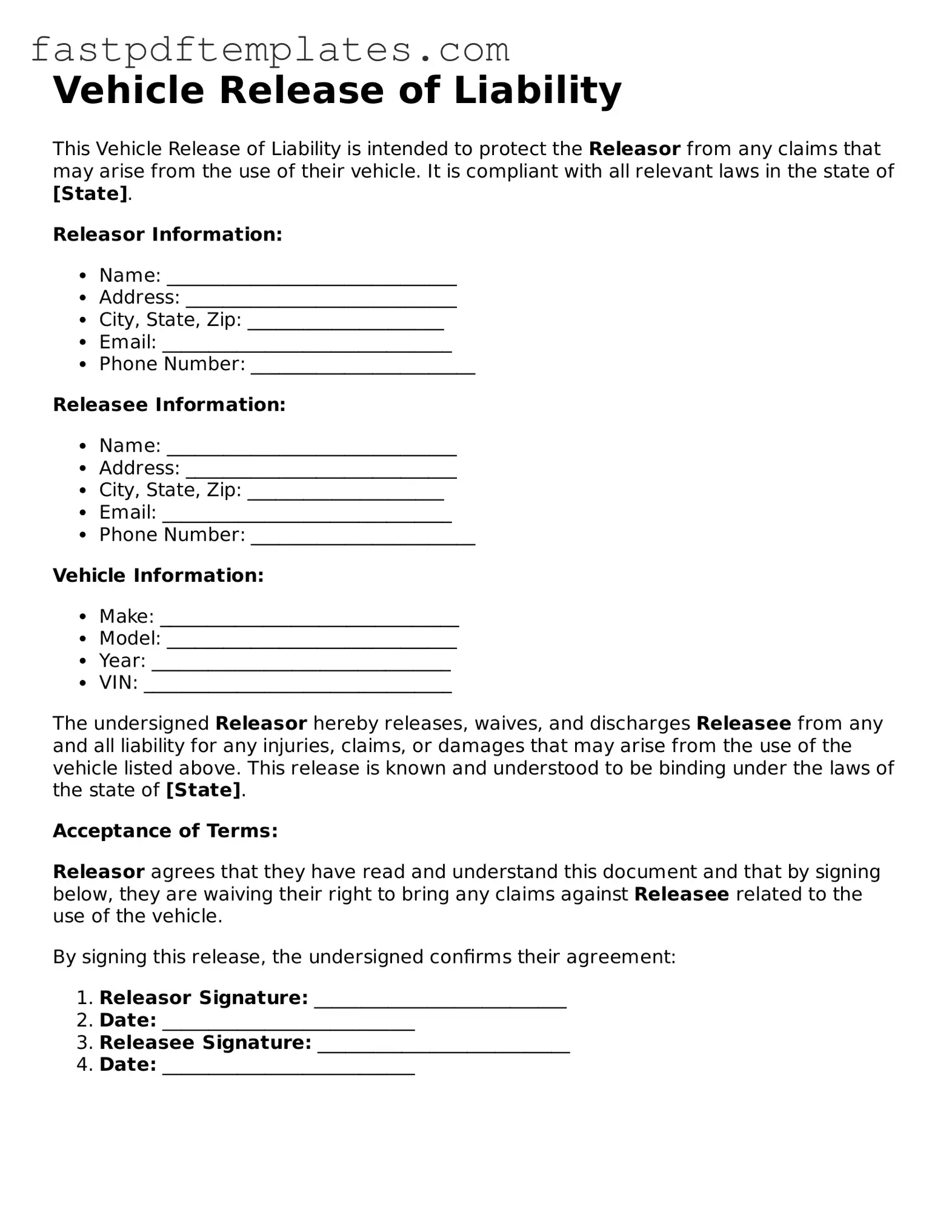Vehicle Release of Liability
This Vehicle Release of Liability is intended to protect the Releasor from any claims that may arise from the use of their vehicle. It is compliant with all relevant laws in the state of [State].
Releasor Information:
- Name: _______________________________
- Address: _____________________________
- City, State, Zip: _____________________
- Email: _______________________________
- Phone Number: ________________________
Releasee Information:
- Name: _______________________________
- Address: _____________________________
- City, State, Zip: _____________________
- Email: _______________________________
- Phone Number: ________________________
Vehicle Information:
- Make: ________________________________
- Model: _______________________________
- Year: ________________________________
- VIN: _________________________________
The undersigned Releasor hereby releases, waives, and discharges Releasee from any and all liability for any injuries, claims, or damages that may arise from the use of the vehicle listed above. This release is known and understood to be binding under the laws of the state of [State].
Acceptance of Terms:
Releasor agrees that they have read and understand this document and that by signing below, they are waiving their right to bring any claims against Releasee related to the use of the vehicle.
By signing this release, the undersigned confirms their agreement:
- Releasor Signature: ___________________________
- Date: ___________________________
- Releasee Signature: ___________________________
- Date: ___________________________
